 “Given a choice between trivial material brilliantly told and profound material badly told, an audience will always choose the trivial told brilliantly.” Robert McKee. With that quote, Esther Choy, founder of LEADERSHIP STORY LAB (tm), goes on to reveal her secrets to great storytelling in business.
“Given a choice between trivial material brilliantly told and profound material badly told, an audience will always choose the trivial told brilliantly.” Robert McKee. With that quote, Esther Choy, founder of LEADERSHIP STORY LAB (tm), goes on to reveal her secrets to great storytelling in business.
I’m at Northwestern, surrounded by fellow Kellogg grads and feel privileged to be here. One never stops learning, and Kellogg never stops offering opportunities to do just that. I’m a storywriter, not a storyteller so this workshop shows both promise and challenge for me.
In preparation for the class, we all view a video about innovation and entrepreneurship, the subject of a previous article. I watch the video twice and take notes. Amazing the way two wildly differing speakers like Sinek and Gingrich can come to identical conclusions about a specific topic: “Why do people succeed at what they do?” Both speakers use the Wright Brothers as an example. I find these talks inspiring and this evening I will again meet an inspirational speaker–this time a humble one.
Quietly, almost shyly, Esther Choy points out you don’t have to be a superhero to tell a great story. She talks about mining, refining, and telling. Tonight, she explains that “mining” is all about getting at the “why” and converting it to key words. The key words become metaphors. She says that on average, we use metaphor every 25 words without even knowing it. She gently takes us through a practical example, lists a few sample questions, then splits us into pairs.
And it works! All fifty of us immediately tell or facilitate a story—I mean everybody. We switch places and the result is just as startling. This is powerful stuff!
She introduces us to another exercise. This time she wants us to talk about something we are passionate about, so she directs us to our hobbies. And sure enough, nobody has any problem talking at length about that. She actually needs to keep us to a time limit.
My hobby is fishing. After telling a fish story, we identify five keywords: Challenge, Environment, Patience, Collaboration, and Satisfaction.
Now she’s issuing a challenge: Tell a story about a business experience. She instructs us to use the keywords just generated from our hobby. And like before, everybody is suddenly able to tell stories!
My story is about entrepreneurship. I’ll break it down into the five keywords we identified from my hobby.
CHALLENGE
Early in my career, my company found itself in need of a radical new product. The president called together the entire engineering staff, described the result he needed, and asked for an all-out effort to develop the new technology. He asked us to push the limits in unimaginable ways.
I found out later that not one of the engineers took up the challenge. Nobody. Zip. At the time I didn’t know why.
The president personally showed up at my office door one day and talked to me about it. “John,” he said, “I want you to do this.”
Now, I have not yet explained my position. My training was as an artist. I was a wet-behind-the-ears kid who joined the company sales force. I made a lousy salesman. My presence at the meeting was purely as an observer. So I argued my lack of credentials.
But he then said a curious thing: “If you don’t do it, John, nobody will.” That inspired me to try. So I baited my hook and cast my line in the water.
ENVIRONMENT
Fishing takes place in a creative environment, usually with no competition or hurry. It’s enjoyable, even if you get no bites. It’s okay to be non-productive. It represents both freedom and peace. It turns out that R&D can be a lot like fishing. Because everybody else refused to try, I had in my hands a project with no real competition but myself. I was not only allowed but expected to let my mind run free and that was pure joy. Like fishing, I could try the various lures in the tackle box and if those didn’t work, make my own. Even my budget had an open end.
As it turned out, all the creative principles I learned in art school translated directly to research and development. And the technology hurdle? I crawled around inside these units and learned all about them. Back at my office, I doodled on scratch paper. One dumb idea after another. That led to a concept, design drawings, and finally a prototype.
PATIENCE
In fishing, you either keep using the same lure till it works or keep trying new lures till you find one that works. It’s trial and error. So it is with R&D. I spent weeks struggling to come up with a viable concept. The hurdles turned out to be significant.
This device needed to be cheap to manufacture and easy to install. What else is new? But it needed strength and accuracy to do its job well. It had to withstand a highly corrosive environment, a constant 400 degrees, and frequent fires. It had to do all that in close proximity to a 40,000-volt electrical source and yet not draw an arc.
This particular application needed to be perfect. If the first installation failed, the company could get wiped out. It was a bet-the-farm project, but that was a big secret. Nobody but the owners and me knew the risks involved.
Every time I thought I had something that showed promise, I looked for alternatives. Lots of alternatives. Meanwhile, the sales department was already busy selling my product—even though it was little more than a glimmer in my mind.
But I finally drew up the plans for the first prototype. We hired a shop to assemble it. I flew it and two tradesmen to a jobsite in the company plane. We installed the thing ourselves.
It worked.
But it became immediately obvious to me that my thinking had been two-dimensional. Certain weaknesses remained and a far better solution waited. That night at the restaurant, I sketched the new plan on a paper napkin. That’s right—just like all those stories you hear. And I got the usual response from those two experienced tradesmen. “No, that won’t work.” I was brought up knowing that opportunity lurks wherever you hear those words. To me, it was like a red flag to a bull.
I remember flying back in IFR conditions in my single-engine plane. I couldn’t see the ground, but I could see the new design as clear as if it already existed. When I reached the office, I committed it to an assembly drawing and had it built. I drew up plans for a miniature unit so I could install prototypes right on the premises. The prototypes required tweaking. A lot of tweaking. I learned to use tools I’d never used before.
Meanwhile, the president approached me and ordered me to release the design to sales. Now, you’ll recall that I stated that if it wasn’t perfect, the very first installation would certainly bankrupt the company. I turned him down flat. Where did I get the power to do that to the president of the company? Knowledge is power. I kept at it and refused to release it until I knew it was right. As it turned out, that took two more months. A fisherman must have patience.
COLLABORATION
When I’m fishing, I don’t want to run the boat. I just want to cast. I prefer to fish with somebody who knows the lake. I get so wrapped up in my fishing that I don’t even know where on the lake I am at any given time. If I had to find the way home, I’d be lost.
I built a great team out men from the trades. Boilermakers. Pipefitters. A kid in the back room that I could see needed to move on to bigger things. These guys didn’t believe in the dingus we worked so hard on. They worked for me because they believed that I believed. And because they believed me, they were willing to do anything I asked. We brainstormed. We bent metal together. We shared beers. We failed and cursed and tried again. I never received an ounce of discouragement from this group of brilliant guys till the first prototype worked. They were so eager to launch it, and yes, they were the ones who resisted the big change at the end—the sketch on the table napkin.
You never know where the big fish are hiding. When I released the final design and companies started buying it, we faced serious struggles in quality control and cost containment. A purchasing agent—a guy not even on my team—came to me with the solution. He discovered a vendor in the slums of Chicago that could make the thing to the tolerances I needed. They could do it consistently. They could do it for 1/4 the price of our other suppliers. That guy transformed a technical success into a financial success.
SATISFACTION
Fishing can mean a trophy or meat on table. Either represents the satisfaction of a primal urge.
When this project started, I had no expectation whatsoever of successfully launching the boat. Certainly not landing a trophy fish. But because a leader inspired me, I tried.
And as a result, I wound up in charge of that engineering department and won seven patents in my own name. That one product and its subsequent variations became the flagship of our company—a company that I bought into at the bottom. And for four years we grew exponentially, orchestrated a successful exit, and ultimately became part of GE.
So I did indeed put meat on my family table. As the saying goes, “If you don’t get your line wet, you won’t catch any fish.”
It’s since been pointed out that my story talks about three distinct groups of people:
- As a new minority shareholder, I had as much to win or lose as the president and other owners. My house–everything I owned vs. a chance to grow a company. High stakes, high reward, total freedom of movement and a chance to create something new. None of the employees had a glimmer of the risk involved–only the owners. If the employees knew that, they would have found steady work elsewhere.
- The team I cobbled together caught my vision. They risked nothing but they believed in why we were doing it. They bought in heart and soul and participated without any other expectation.
- The engineers that refused to pick up the challenge feared personal failure, looking bad to their peers, damaging their careers–nothing more. There was little upside for them. Perhaps a small raise?
MY TAKEAWAY – People seldom create on a paycheck. It requires taking on risk, an entrepreneurial mindset and self sacrifice. People need much deeper reasons to do that. They need to believe in what they are doing. They need to catch the vision.
MEANWHILE, BACK TO THE MEETING – I look at my story partner in surprise. Did that narrative just pop out of me? Thank you Esther Choy. May you continue to rack up success after success with your Leadership Story Labs. Thank you for codifying the elements of storytelling and making the process seem so easy.
Find Esther Choy at http://leadershipstorylab.com/
..
GO TO PART 3 – WALTER MITTY STRIKES AGAIN.
.
.
Find Chicago Venture Magazine at
www.ChicagoVentureMagazine.com Comments and re-posts are welcomed and encouraged. This is not investment advice – do your own due diligence. I cannot guarantee accuracy but I give you my best.
Copyright © 2012 John Jonelis – All Rights Reserved.




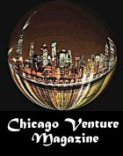








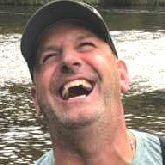






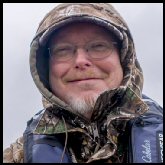






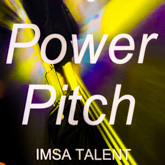





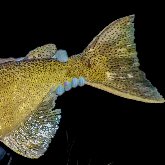






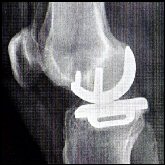
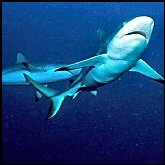







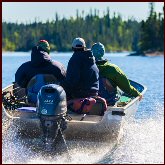










































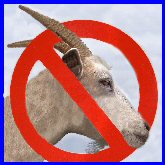










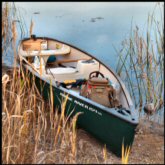












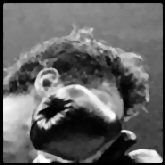





























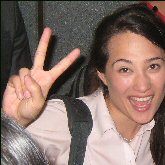








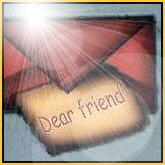














Solving something needs to be the focus. Sooner or later somebody has to say it “Americans have become fat and lazy” – literally and in terms of what we’re willing to take on. We could lead the World and restore our economy, if we focused on solving problems. Regarding job-creation, it will never come from government programs and it never has.
As a nation we have lazily become very incremental about everything, including innovation.
Small steps are all we’re willing to even consider. SOLVE problems with economically-viable solutions and the resulting “demand” will create jobs.
My work is here: http://www.Solutioneur.com
Solve something. THAT will make a difference.
Great video. Exciting stuff!
Pingback: 5 KEYS TO BIG FISH AND INVENTION – John Jonelis – SoshiTech
I take pleasure in, cause I discovered exactly what I used to be taking
a look for. You have ended my 4 day lengthy hunt! God Bless you man.
Have a great day. Bye
Pingback: WALTER MITTY STRIKES AGAIN | Chicago Venture Magazine
Pingback: THE WRIGHT BROTHERS AND ENTREPRENEURSHIP | Chicago Venture Magazine
We stumbled over here by a different page and thought I may as well check things out.
I like what I see so now i am following you. Look forward to looking over your web page again.
I love what you guys tend to be up too. Such clever work and exposure!
Keep up the amazing works guys I’ve included you guys to my blogroll.
Yes! Finally something about house painting color.
Hi! I’ve been reading your weblog for a while now and finally got the courage to go ahead and give you a shout out from Lubbock Tx!
Just wanted to tell you keep up the excellent work!
This design is steller! You obviously know how
to keep a reader amused. Between your wit and your videos, I was almost moved to start my own blog (well, almost…HaHa!) Wonderful job.
I really enjoyed what you had to say, and more than that, how you presented it.
Too cool!
Fastidious respond in return of this issue with firm arguments and telling everything on the topic of
that.
Hi there, There’s no doubt that your web site could be having browser compatibility problems.
Whenever I look at your website in Safari, it looks fine however, if opeing iin Intternet
Explorer, it’s got some overlapping issues. I merely wanted too give you
a quick heads up! Apart from that, fantasic website!
What part of my web business should I give full attention to when I’m just starting out.
Today there are marketing consultants who is able to help
online and offline businesses succeed with all the internet.
Once you realize your customer, you can also post ads on the ezine which might be very aiimed at the list.
It’s going to bbe finish of mine day, except before finish I am reading this wonderful post too improve my know-how.